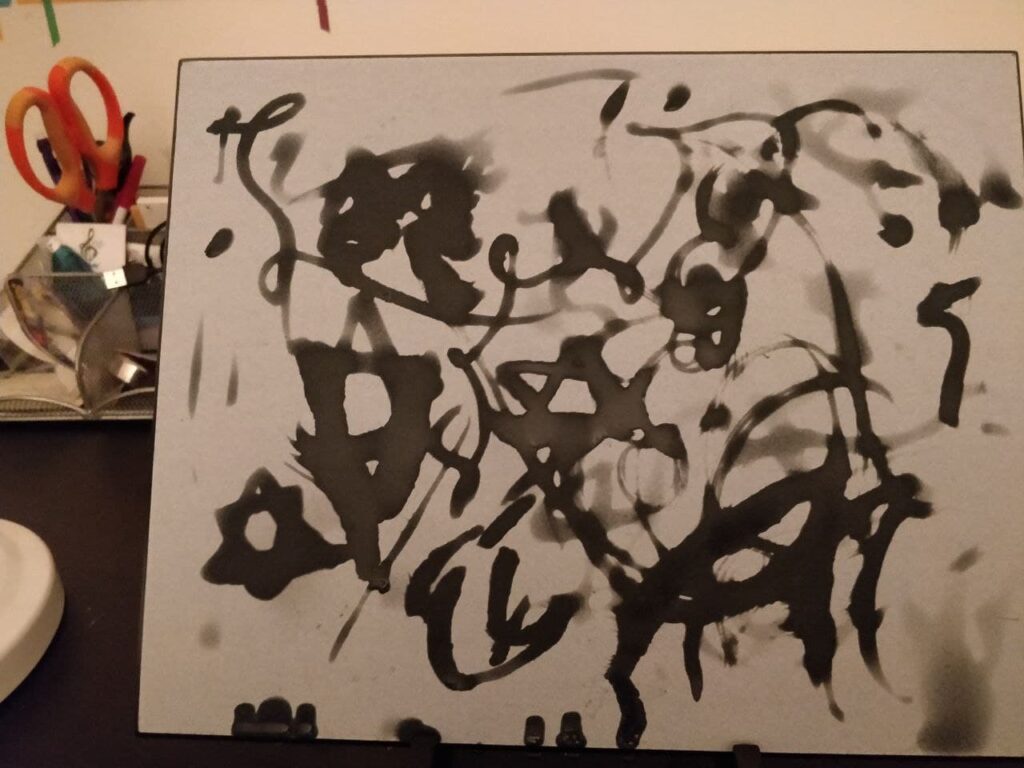I had an incredibility liberating and empowering experience last night, inspired by Pat Allen. I allowed myself to give total free reign to my visual impulses, with absolutely no consideration of outcome or technique. Well, naturally my technique was informed by what I’ve already learned about Chinese brush painting, especially since I have so little other art experience. But what enabled this experience of abandon was impermanence. I went back to the old Buddha Board. And I just went crazy. Because I knew that everything I did would disappear. This lent me the sense of safety, of courage to explore, that I needed. The trick I played on my self is that I documented this process. I took eight photographs of my disappearing painting, as it changed, grew, shrank, evolved, became. And wow, I really got bold. I got into some of that coveted Pollack and de Kooning territory, and I have the pics to prove it! What a lovely experience, because as I think I’ve mentioned, there is something that has long spoken to me in Abstract Expressionism, it seems to encapsulate what “art” or, more precisely “being an artist” means to me. While there is a lot there regarding the context, the concept of “coolness” and so on, the fact remains that those paintings just speak to me, and I realize I’ve had an urge to create images like that, but have felt intimidated and inhibited. The combination of Pat Allen’s open, encouraging philosophy of image-making, with the temporary nature of the painting, gave me permission to just go for it. And I’m so glad I did. In fact, I’m beginning to think that an aspect I’d like to continue to explore is the photographic documentation of disappearing paintings. The juxtaposition of motion and stillness, product and process, solidity and impermanence, is very intriguing to me. And it feels very resonant with Taoism and Chan (Zen) Buddhism, bringing me back to traditional Chinese philosophies. Yes! Connecting modern western painting with traditional Chinese painting, and with photography, and with spiritual philosophies that emphasize the present moment and impermanence, this direction feels valuable and important to me. The paradox of capturing frozen moments of an ever-changing flow. This feels closely related to music as well. I’m interested in the ways that movement can be seen in painting, and here it becomes more literalized as I create changing, vanishing paintings, and photographically record the process of change and decay.







